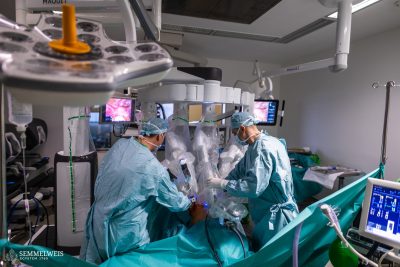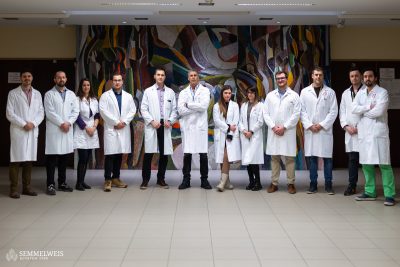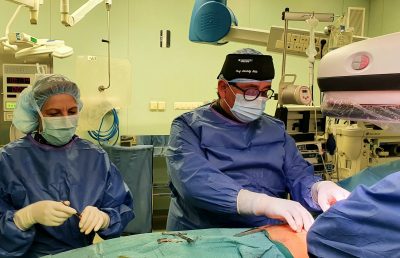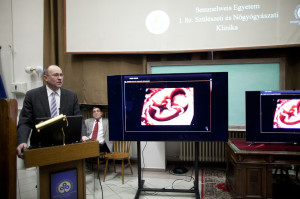 An ultrasound symposium was held at the 1st Department of Obstetrics and Gynaecology where the brand new 5D ultrasound machine was presented for the first time in Hungary. The machine made its international debut in Paris merely 2 months ago. Dr. János Rigó, director of the 1st Department of Obstetrics and Gynaecology said that the machine will open new prospects in gynaecological and obstetric ultrasound diagnostics. The main topics of the symposium included the development of the ultrasound, its past and present and the expected technical developments in the future.
An ultrasound symposium was held at the 1st Department of Obstetrics and Gynaecology where the brand new 5D ultrasound machine was presented for the first time in Hungary. The machine made its international debut in Paris merely 2 months ago. Dr. János Rigó, director of the 1st Department of Obstetrics and Gynaecology said that the machine will open new prospects in gynaecological and obstetric ultrasound diagnostics. The main topics of the symposium included the development of the ultrasound, its past and present and the expected technical developments in the future.
[pullquote]ultrasound diagnostics fundamentally changed the obstetric and gynaecological services as well as the diagnostic and therapeutic thinking.[/pullquote]Dr. István Szabó, secretary general of the Hungarian Association of Obstetric and Gynaecological Ultrasound presented the developments of the last quarter century and the current state of ultrasound diagnostics. He commemorated Ian Donald, a Scottish professor who was the father of obstetric and gynaecological ultrasound diagnostics. He was the first to determine pregnancy with the use of ultrasound examination. Dr. Szabó also mentioned that the appearance of real-time imaging was a great step forward in ultrasound diagnostics since – in contrast to previous procedures – it was capable of showing motion in the desired location. Dr. Szabó emphasised that the ultrasound diagnostics fundamentally changed the obstetric and gynaecological services as well as the diagnostic and therapeutic thinking.Nowadays the greatest challenge of the gynaecological and obstetric ultrasound diagnostics is the shift from a quantity to a quality focused approach. He emphasised that there is no other possibility for further development in the long run.
Following Dr. Szabó’s presentation, Dr. Amrita Halmos, the Department’s assistant lecturer talked about the ultrasound examination’s relevance in present days. She pointed out the fact that proper examination of the third and fourth trimesters necessitates the use of ultrasound. She also underlined that the main advantage of the 3D technology is that diagnostics are less dependent on the position of the foetus and it is better suited to show developmental disorders.
Finally, Dr. Attila Molvarec, senior lecturer of the Department, talked about the future of ultrasound diagnostics. He highlighted that the technology has gone through major developments in the past few years and that this development is still in progress. He also outlined the qualities which the future ultrasound machine is expected to possess. These include faster and more detailed imagining, reproducibility, increased measuring accuracy, longevity and portability.
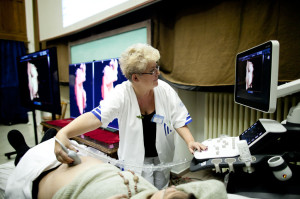
At the end of the symposium, László Giay, manager at Sonarmed Ltd. presented the technical parameters of the machine. He told the audience that the state of the art machine differs from the 3D/4D machines in that it simplifies and accelerates the highly complicated and difficult measuring processes therefore making them easier to utilise in practice. In other words, the machine is capable of making highly precise calculations automatically. A special feature of the machine is that the 3D information is digitalised in the form of ‘tissue-blocks’ which then can be stored and transferred. Therefore the examinations can be undertaken in distant centres and hospitals as well without requiring the patient to be physically present there. Finally, at the end of the symposium, the equipment was demonstrated.
Bernadett Kiss-Bódi
Photos: Attila Kovács – Semmelweis University
Translated by: Bonifac Makkai
